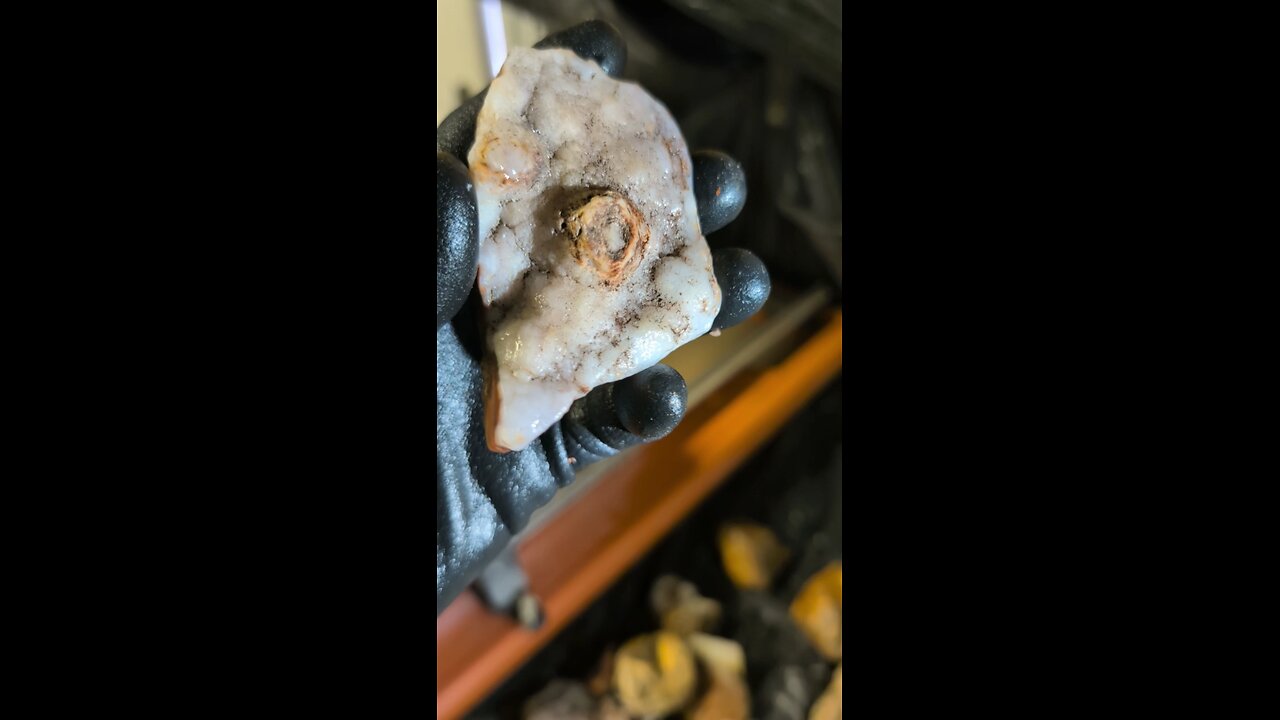Premium Only Content

Agate Drop!
Agate is a microcrystalline variety of quartz, specifically a form of chalcedony, known for its fine grain and bright color patterns. Here are some key points about agate:
Formation: Agate forms in volcanic and sedimentary rocks. It often begins as a cavity in the rock, which then gets filled with layers of silica-rich water. Over time, this solution deposits minerals in layers, creating the characteristic banding of agate. This process can take millions of years.
Appearance: Agate is famous for its beautiful, often banded patterns of color, which can range from translucent to opaque. Colors include white, blue, red, black, yellow, and brown among others, with the patterns formed by the successive layers of chalcedony being deposited. Sometimes, agates can be found with inclusions like moss (moss agate) or even fossils.
Types of Agate:
Banded Agate: Shows clear, concentric bands of color.
Moss Agate: Contains mineral inclusions that look like moss or foliage.
Dendritic Agate: Similar to moss agate but with tree-like or branch-like patterns.
Fire Agate: Contains iridescent layers that appear to glow with fiery colors.
Lace Agate: Features lace-like patterns, most notably in Blue Lace Agate from Namibia.
Crazy Lace Agate: Known for its wild, chaotic patterns of colors.
Locations: Agates are found worldwide, but some of the most famous locations include Brazil, Uruguay, Mexico, Germany, Madagascar, and the United States (particularly in Oregon, Washington, and Idaho).
Uses:
Jewelry: Due to its beauty when polished, agate is widely used in jewelry like rings, pendants, and beads.
Decorative Items: Larger pieces or slices are used for decorative objects, bookends, or as display pieces.
Metaphysical: In metaphysical practices, agate is believed to have various healing properties, like balancing physical, emotional, and intellectual energy, and promoting strength and courage.
Cultural Significance: Agate has been used since ancient times; it was prized in Ancient Egypt for amulets and seals, in Greece and Rome for intaglios and cameos, and by many other cultures for its beauty and supposed protective qualities.
Cutting and Polishing: When cutting agate for jewelry or display, lapidaries look for the most visually appealing patterns. The process involves sawing, grinding, and polishing to bring out the internal beauty of the stone.
Agate's diversity in color and pattern, combined with its durability, makes it one of the most sought-after stones in the world of gemology and mineral collecting.
-
 LIVE
LIVE
Reidboyy
52 minutes agoHow To Make $$$ in Delta Force Console Operations!
49 watching -
 1:00:35
1:00:35
Timcast
2 hours agoDOJ To BAN Transgenders From Owning Guns
101K108 -
 LIVE
LIVE
Side Scrollers Podcast
2 hours agoUK JAILS TV WRITER FOR WRONG THINK + TWITCH ALLOWS CYBERSTALKING + MORE | SIDE SCROLLERS LIVE
339 watching -
 LIVE
LIVE
Viss
2 hours ago🔴LIVE - PUBG Solo Tactics To Win Consistently! - PUBG 101
98 watching -
 2:05:54
2:05:54
Steven Crowder
4 hours agoLive Reaction: RFK Faces Senate Grilling After Employees Demand His Resignation
261K206 -
 1:02:58
1:02:58
The Rubin Report
3 hours agoPress Stunned by Trump’s Brutally Honest Message for Elon Musk
46.7K43 -
 LIVE
LIVE
Rebel News
1 hour agoPolice chief says 'comply' with intruders, Carney on temp workers, Trump on tariffs | Rebel Roundup
314 watching -
 19:19
19:19
Neil McCoy-Ward
1 hour ago🚨 Hospitals Are Bracing For MASS Casualties...
7.84K1 -
 1:38:39
1:38:39
The Mel K Show
2 hours agoMORNINGS WITH MEL K - NATO Cognitive Warfare & Post WWII Betrayal Finally Exposed 9-4-25
20.2K17 -
 1:34:43
1:34:43
The Shannon Joy Show
4 hours agoCOVID Not A ‘Lab Leak’, It Was Created At UNC Chapel Hill! LIVE - Exclusive With Dr. David Martin
15.1K15